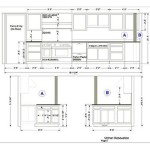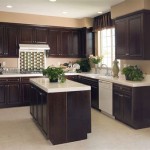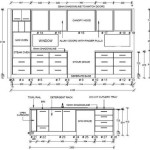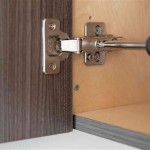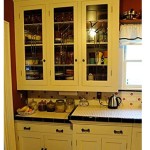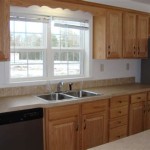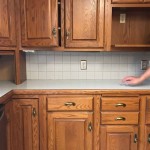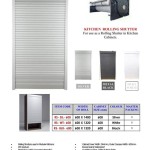Mobile Home Kitchen Cupboard Doors: A Comprehensive Guide
Mobile homes, also known as manufactured homes, offer an affordable housing option for many. However, the interior design and construction often differ from traditional site-built homes. One area where these differences are particularly noticeable is in the kitchen, specifically concerning the cupboard doors. Understanding the nuances of mobile home kitchen cupboard doors is crucial for homeowners looking to remodel, repair, or simply upgrade their living space.
The selection and maintenance of cupboard doors in a mobile home require special attention due to variations in size, construction materials, and installation methods. This article provides a comprehensive overview of mobile home kitchen cupboard doors, covering aspects such as common materials, size considerations, replacement strategies, and essential maintenance tips. This information aims to equip homeowners with the knowledge needed to make informed decisions regarding their mobile home kitchen cupboards.
Understanding the Unique Characteristics of Mobile Home Kitchen Cupboard Doors
Mobile home construction often prioritizes cost-effectiveness and weight reduction, which directly impacts the materials and design of kitchen components. This section delves into the core differences between mobile home cupboard construction and that of traditional homes, highlighting the specific challenges and considerations that homeowners should be aware of.
One of the primary differences lies in the dimensions. Mobile home manufacturers typically adhere to specific standardized sizes to optimize space within the often-smaller footprint of the home. This standardization can limit the availability of replacement doors from standard big-box retailers, necessitating custom orders or modifications. Cupboard door dimensions are often smaller in height and width compared to those found in conventionally built homes. Depth may also be a factor, as mobile home walls and cabinetry are sometimes thinner to save space and weight. Careful measurement is essential before undertaking any replacement or renovation project.
The construction materials used in mobile home kitchen cupboards are typically lightweight and inexpensive. Particleboard and MDF (Medium-Density Fiberboard) are common choices due to their cost-effectiveness and ease of machining. However, these materials are more susceptible to moisture damage than solid wood. The surface finish, often a laminate or vinyl coating, further protects the substrate but can peel or chip over time. The hardware, such as hinges and knobs, may also be of lower quality than that found in traditional homes, resulting in premature wear and tear.
Installation methods can also differ. Mobile home cupboards are frequently attached using simpler techniques, such as staples or lightweight screws, rather than the more robust methods employed in conventional construction. This can lead to cupboards becoming loose or misaligned over time, particularly when subjected to the stresses of transportation and everyday use. Understanding these construction nuances is essential for successful repairs and replacements.
Materials Commonly Used in Mobile Home Kitchen Cupboard Doors
The selection of appropriate materials is critical for the durability, aesthetics, and functionality of mobile home kitchen cupboard doors. This section explores the most commonly used materials, outlining their advantages, disadvantages, and relative costs.
Particleboard is a widely used material for mobile home cupboard construction due to its low cost and availability. It's manufactured by compressing wood chips and resin, creating a relatively stable and uniform substrate. However, particleboard is highly susceptible to moisture damage, causing it to swell and crumble. It offers limited structural integrity and can be difficult to repair once damaged. Its primary advantage is its low price point, making it a budget-friendly option for manufacturers.
MDF is another popular choice, offering improved strength and moisture resistance compared to particleboard. MDF is made from fine wood fibers compressed with resin, resulting in a smoother and more dense material. It accepts paint and finishes well, making it a versatile option for various design styles. While more durable than particleboard, MDF is still prone to damage in humid environments and should be properly sealed to prevent moisture absorption. It represents a middle ground in terms of cost and performance.
Solid wood, although less common in original mobile home construction due to its higher cost and weight, can be an excellent upgrade option. Solid wood offers superior durability, strength, and aesthetic appeal. Common wood species used for cupboard doors include pine, oak, maple, and cherry. Solid wood is more resistant to moisture damage and can be easily repaired or refinished. However, it is more expensive than particleboard or MDF and may require additional reinforcement to accommodate its weight, especially in older mobile homes.
Laminates and vinyl wraps are often applied to particleboard or MDF cupboard doors to provide a decorative and protective surface. These materials are available in a wide range of colors, patterns, and textures, mimicking the appearance of wood, stone, or other materials. Laminates are thin sheets of plastic bonded to the substrate with adhesive, while vinyl wraps are flexible films that are heated and molded to the surface. Both options provide a durable and easy-to-clean finish but are susceptible to scratches, chips, and peeling over time. The quality of the laminate or vinyl wrap can significantly impact the longevity of the cupboard doors.
Essential Steps for Replacing Mobile Home Kitchen Cupboard Doors
Replacing kitchen cupboard doors in a mobile home can significantly enhance the look and functionality of the kitchen. However, it requires careful planning and execution to ensure a successful outcome. This section outlines the critical steps involved in replacing mobile home kitchen cupboard doors, from measuring and selecting the right doors to installation and finishing touches.
Precise measurements are paramount. Measure the width, height, and thickness of the existing cupboard doors. Pay close attention to any variations in size between different cupboards. It's essential to measure the openings of the cupboard frames as well to ensure that the new doors will fit properly. Account for any existing hardware, such as hinges and pulls, and determine their placement. Create a detailed diagram of each door with accurate dimensions to avoid errors when ordering or fabricating replacement doors.
Selecting the right replacement doors involves considering factors such as material, style, and finish. Choose a material that aligns with your budget and desired level of durability. Solid wood offers the best longevity and aesthetic appeal but is more expensive. MDF provides a good balance of cost and performance, while particleboard is the most budget-friendly option. Select a style that complements the overall design of your kitchen, whether it's a traditional raised panel or a modern slab door. Consider the existing hardware and choose doors that can accommodate it, or plan to replace the hardware as well. Choose a finish that is durable, easy to clean, and matches your existing cabinetry or desired color scheme.
Installation requires careful attention to detail. Remove the old cupboard doors by unscrewing or detaching the hinges. Clean the cupboard frames thoroughly to remove any debris or residue. Install the new hinges, ensuring proper alignment and secure attachment. Hang the new cupboard doors, adjusting the hinges as needed to achieve a flush and even fit. Check the alignment of the doors and make any necessary adjustments to ensure that they open and close smoothly. Install the hardware, such as knobs or pulls, according to the manufacturer's instructions. Test the doors thoroughly to ensure that they are functioning correctly and securely.
Addressing potential challenges is essential. Mobile homes often have non-standard sizes, so finding pre-made replacement doors that fit perfectly may be difficult. In such cases, custom-made doors may be necessary. If the cupboard frames are damaged or warped, they may need to be repaired or replaced before installing new doors. Ensure that the hinges are compatible with the cupboard frames and doors. If the existing hardware is outdated or worn, consider replacing it with new hardware. Be prepared to make minor adjustments to the doors or frames to achieve a proper fit. Consult with a professional if you are unsure about any aspect of the installation process.

How To Update Mobile Home Cabinets Living

Double Wide Mobile Home Kitchen Cabinets Rocky Hedge Farm

Double Wide Mobile Home Kitchen Cabinets Rocky Hedge Farm

Double Wide Mobile Home Kitchen Cabinets Rocky Hedge Farm

7 Affordable Ideas To Update Mobile Home Kitchen Cabinets Living

Clayton Built Home Cabinet Care Studio

30 Gorgeous Mobile Home Kitchen Cabinet Colors Living

Double Wide Mobile Home Kitchen Cabinets Rocky Hedge Farm

Diffe Types Of Kitchen Cabinet Doors For Your Home

7 Affordable Ideas To Update Mobile Home Kitchen Cabinets Living
Related Posts

